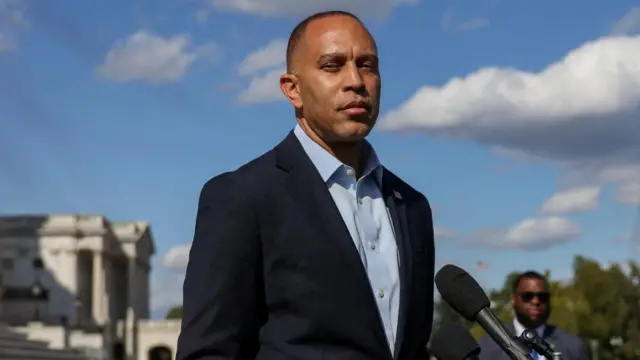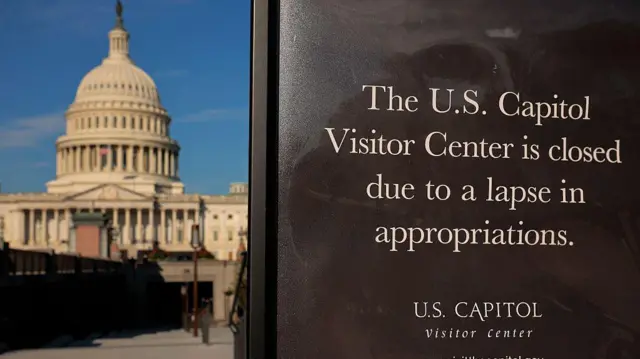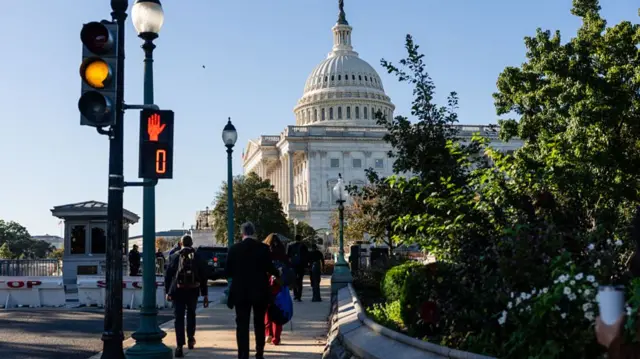Hakeem Jeffries says Trump needs to actpublished at 16:48 BST 24 October
 Image source, Reuters
Image source, ReutersUS House Minority Leader Hakeem Jeffries listens to questions from reporters on the step of the US Capitol
In a news conference about the shutdown, House Minority Leader Hakeem Jeffries says Democrats have not moved from their position: they will continue fighting to bring back funding for Americans' healthcare.
Jeffries says that congressional Republicans won't do anything unless President Donald Trump tells them to.
"I said this directly to the president, with Johnson and Thune right next to me, this does not get resolved until you decide to give permission to Republicans on Capitol Hill to negotiate a bipartisan resolution," Jeffries says, referring to House Speaker Mike Johnson and Senate Majority Leader John Thune.
Jeffries also adds that House Democrats are ready to consider any bipartisan, good-faith proposals that come out of the Senate.








